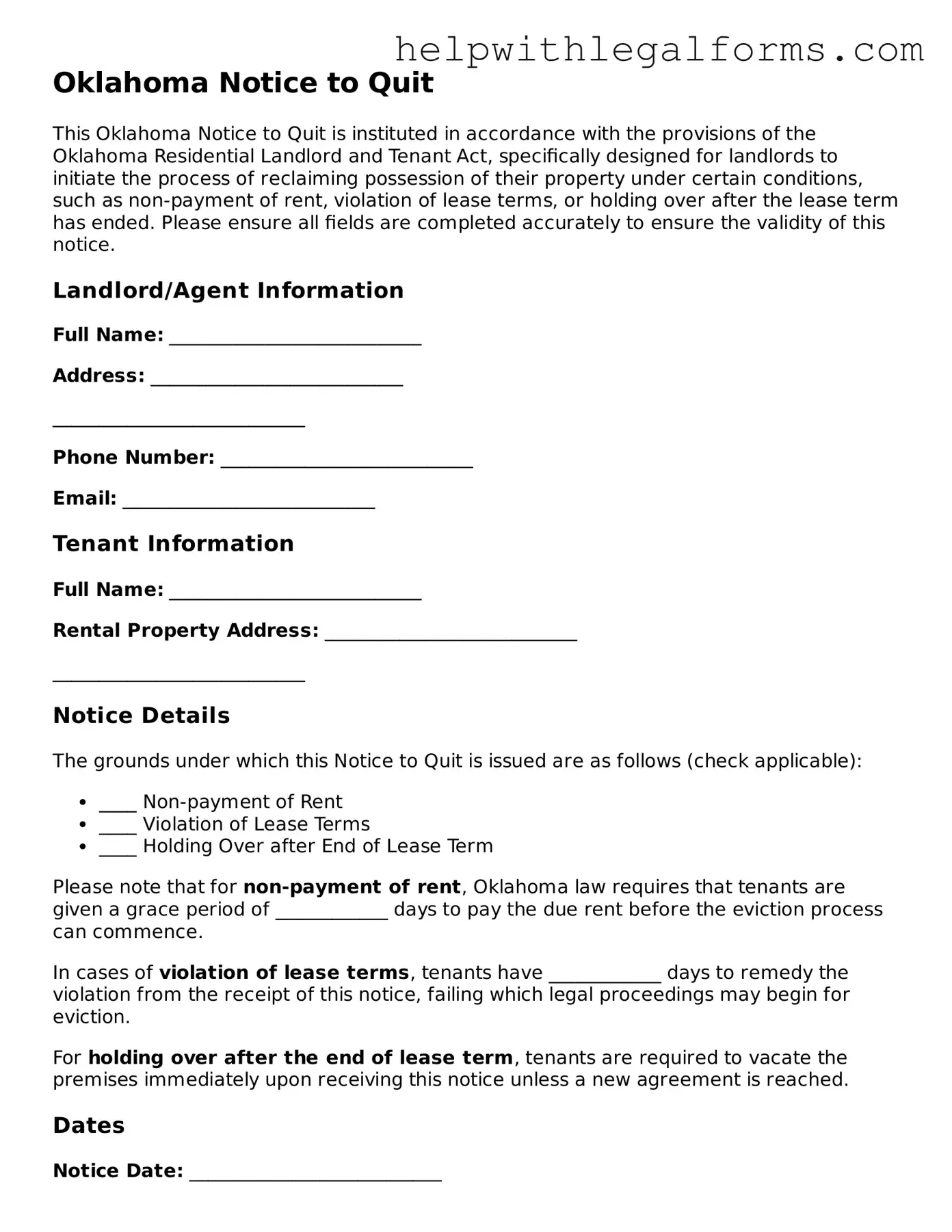What is an Oklahoma Notice to Quit form?
An Oklahoma Notice to Quit form is a legal document used by landlords to notify tenants that they must either remedy a violation of the lease agreement or vacate the property within a specified time frame. The notice outlines the reasons for eviction, such as non-payment of rent or other breaches of the lease, and gives the tenant a chance to correct the issue or face legal eviction proceedings.
When is it appropriate to use an Oklahoma Notice to Quit?
This notice is appropriate to use when a tenant in Oklahoma has violated the terms of their lease or rental agreement and the landlord wishes to begin the process of legally removing the tenant from the property. Common violations include failing to pay rent on time, damaging the property, or engaging in illegal activities on the premises.
How much notice must be given to the tenant?
The amount of notice required depends on the type of violation. For non-payment of rent, landlords must give a five-day notice to quit, allowing the tenant five days to pay the rent or face eviction. For violations of the lease or rental agreement other than non-payment of rent, the tenant must be given 15 days to remedy the violation or vacate the premises.
What happens if the tenant does not comply with the Notice to Quit?
If the tenant does not correct the breach within the given timeframe or vacate the property, the landlord may proceed with filing an eviction lawsuit in court. This step typically involves serving the tenant with a summons to appear in court, where a judge will determine the right to possession of the property.
Is the Oklahoma Notice to Quit required even if the lease has a specific end date?
Yes, even if the lease specifies an end date, landlords are generally required to provide a Notice to Quit if they wish to remove a tenant for violating the lease terms before the lease period ends. This ensures that tenants receive fair warning and an opportunity to address the issue, in accordance with Oklahoma law.
Can a tenant dispute an Oklahoma Notice to Quit?
Yes, a tenant can dispute a Notice to Quit by responding to the eviction lawsuit filed by the landlord. At the court hearing, the tenant has the opportunity to present evidence and argue why they should not be evicted. It’s advisable for tenants to seek legal advice if they find themselves in this situation.
Does the Oklahoma Notice to Quit need to be notarized?
No, an Oklahoma Notice to Quit does not need to be notarized. However, it should be delivered in a manner that can be verified, such as through certified mail, to ensure there is proof the tenant received the notice.
What details should be included in an Oklahoma Notice to Quit?
The notice should clearly state the tenant's name, the rental property address, the specific violation or reason for the notice, the date by which the tenant must remedy the violation or vacate the property, and a statement indicating that legal action may be taken if the tenant does not comply. Including the date of notice issuance and the landlord’s signature is also essential.
Where can I find an Oklahoma Notice to Quit form?
An Oklahoma Notice to Quit form can typically be found online through legal resources and websites specializing in legal documents. Alternatively, it may be beneficial to consult with a lawyer or legal expert to ensure the notice complies with current Oklahoma laws and is filled out correctly.
